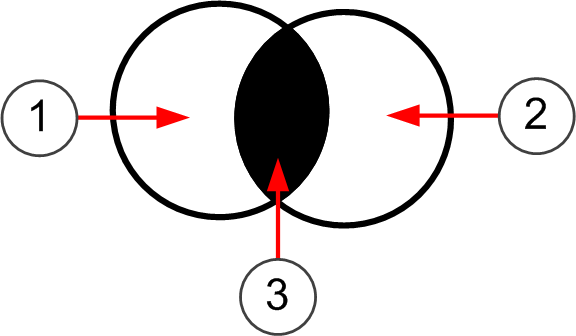Intersection
Intersection means “include only those IP addresses that are a part of both sets”.
Figure: Graphical representation of an intersection

- 1
- Address Space A
- 2
- Address Space B
- 3
- IP addresses that are in common. This is the intersection.
Example
We could intersect two address ranges, A (192.168.10.200 – 192.168.10.300) and B (192.168.10.250 – 192.168.10.350). The expression reads A ⋂ B and it resolves to the following IP addresses: 192.168.10.250 – 192.168.10.300 (the IP addresses that appear in both ranges).We now return to the previous example on the negation operand, where an intersection was also used: 192.168.10.0/24 ⋂ ~192.168.10.200. On the left side, there is a specific network that we intersect with the right side that contains all possible IP addresses except one IP address. The intersection resolves to the IP addresses that the left side and the right side have in common. These addresses include the IP addresses in network 192.168.10.0/24 except the one IP address that is excluded on the right side of the equation. As shown here, intersections allow us to make expressions more specific.